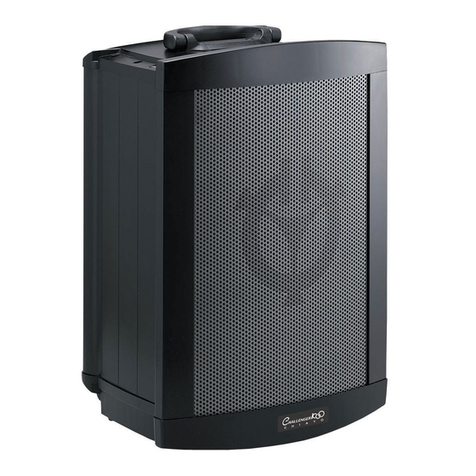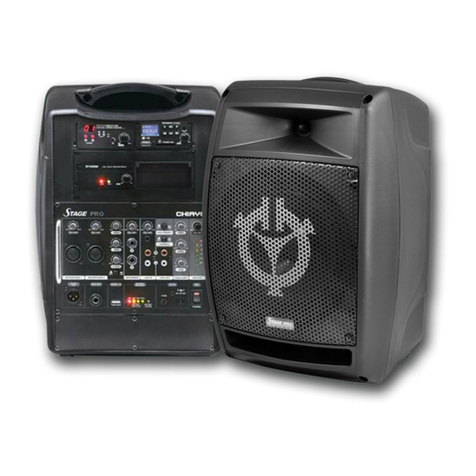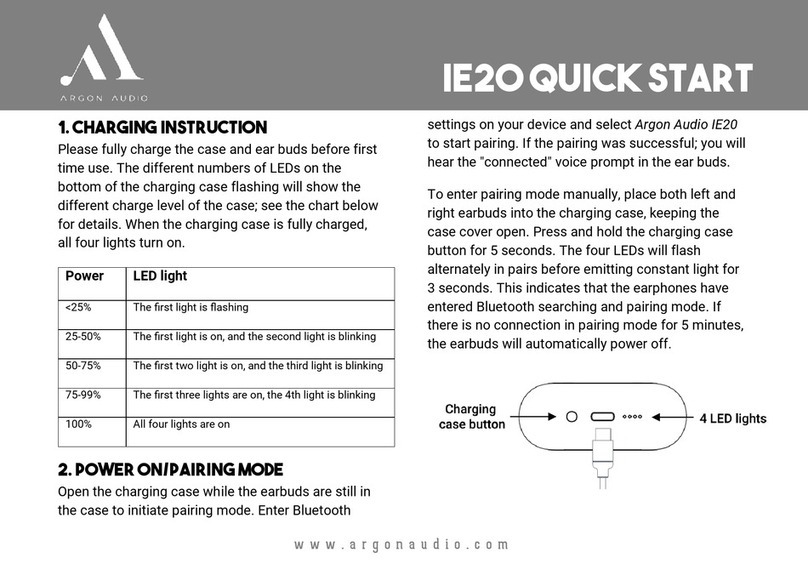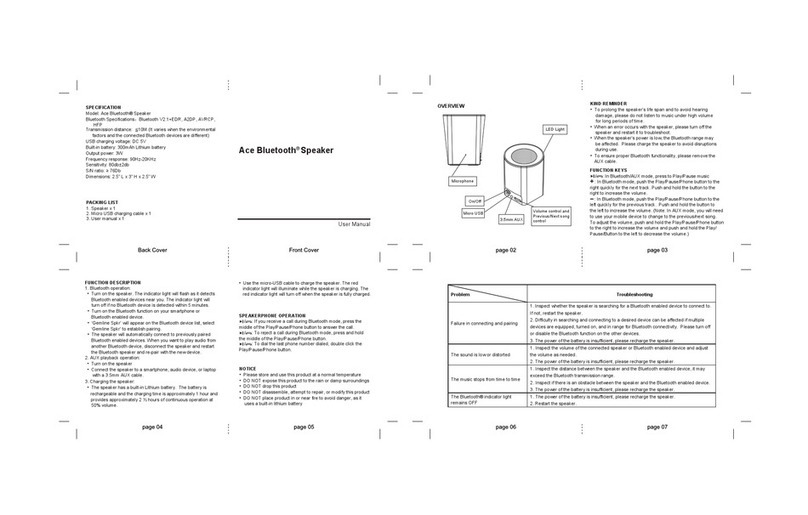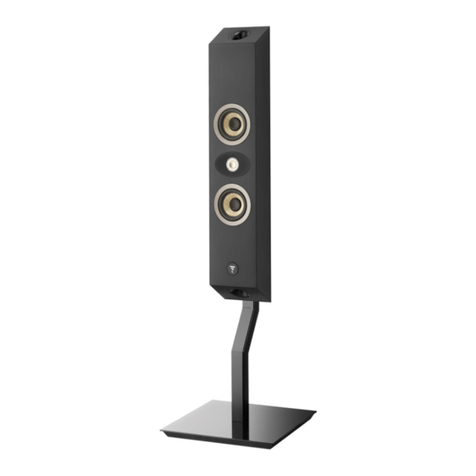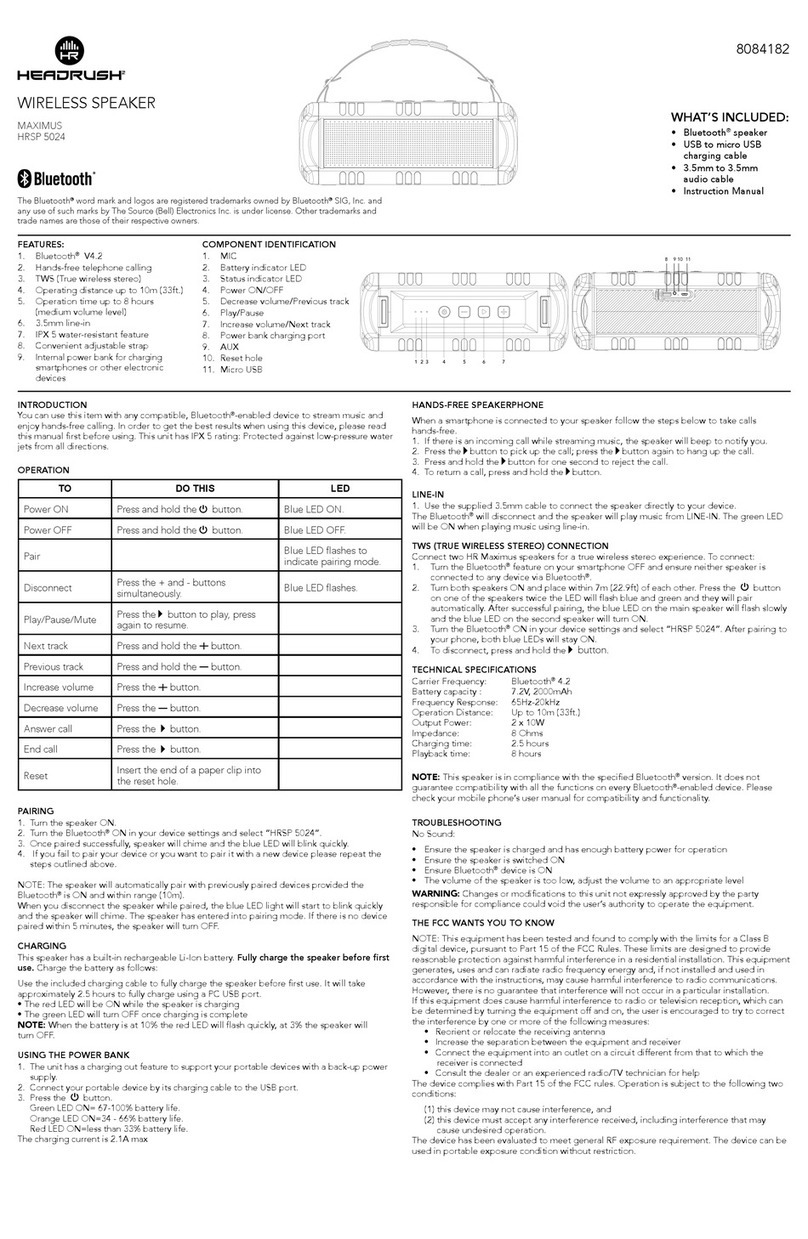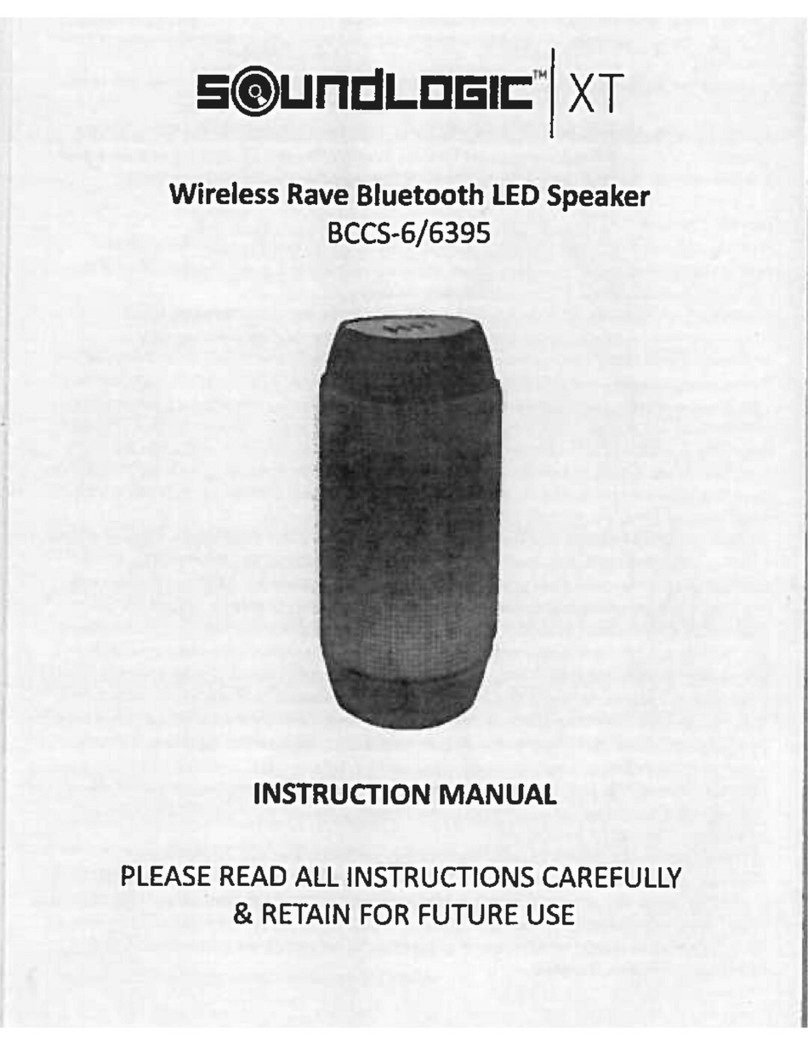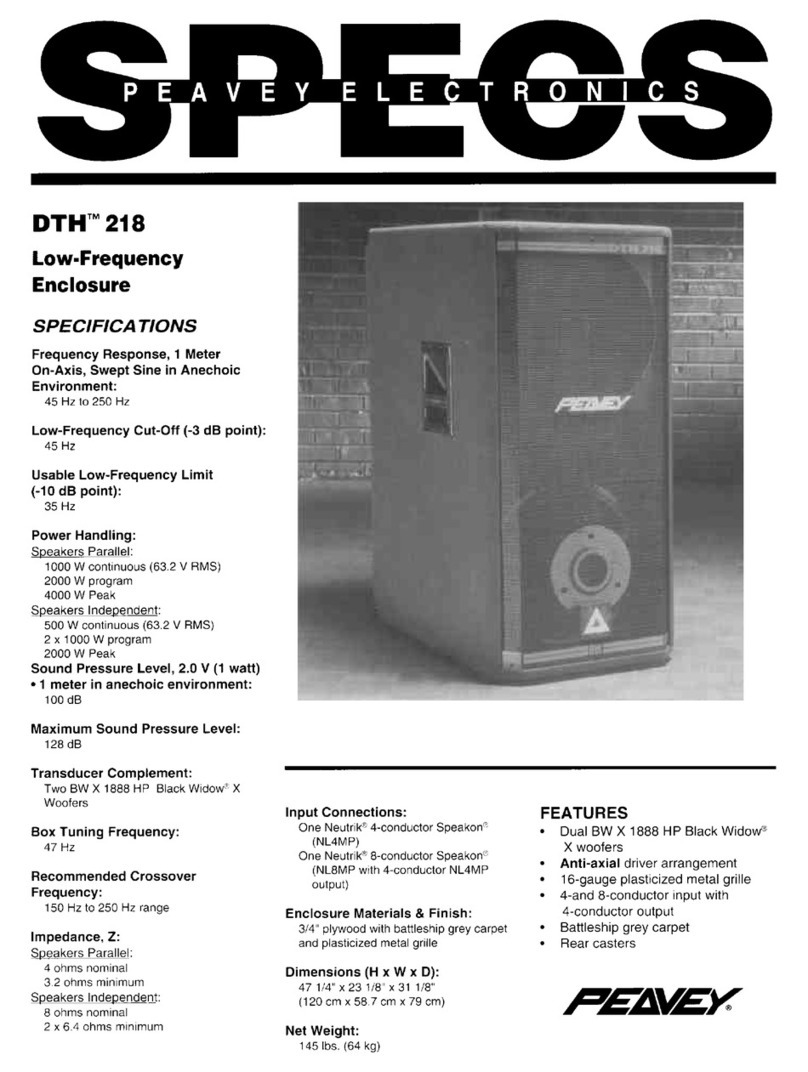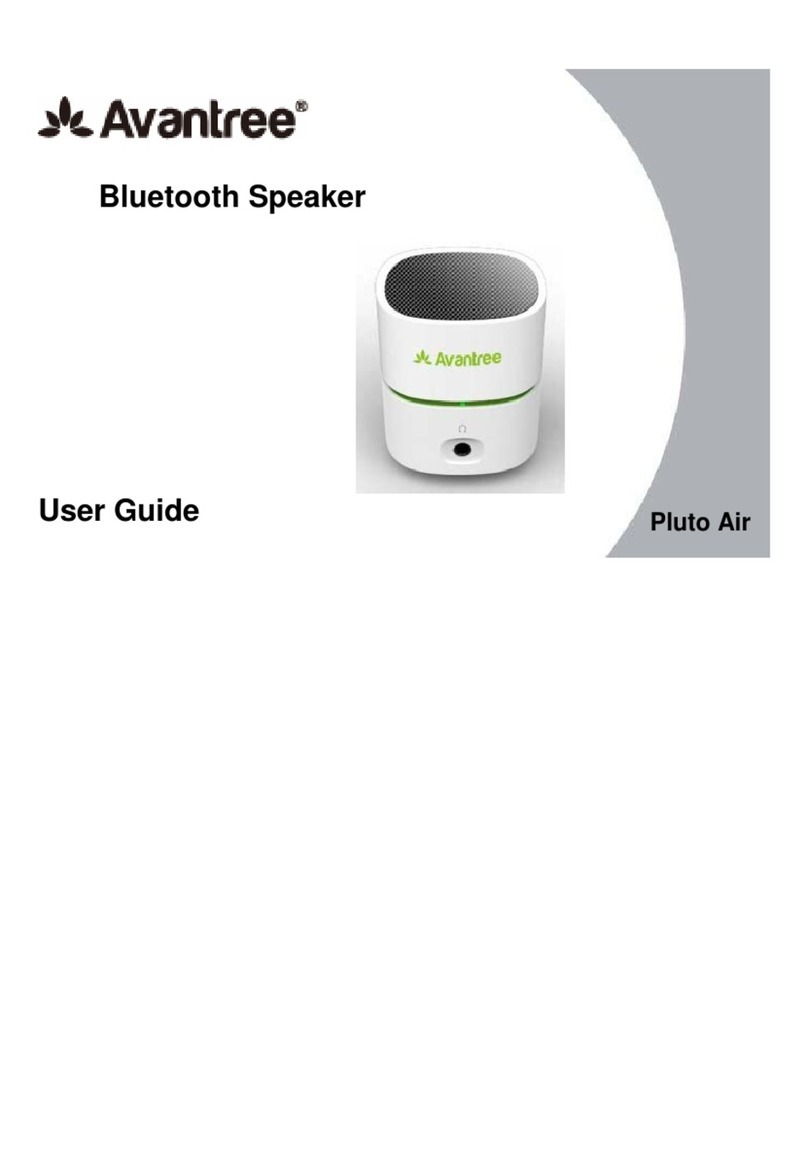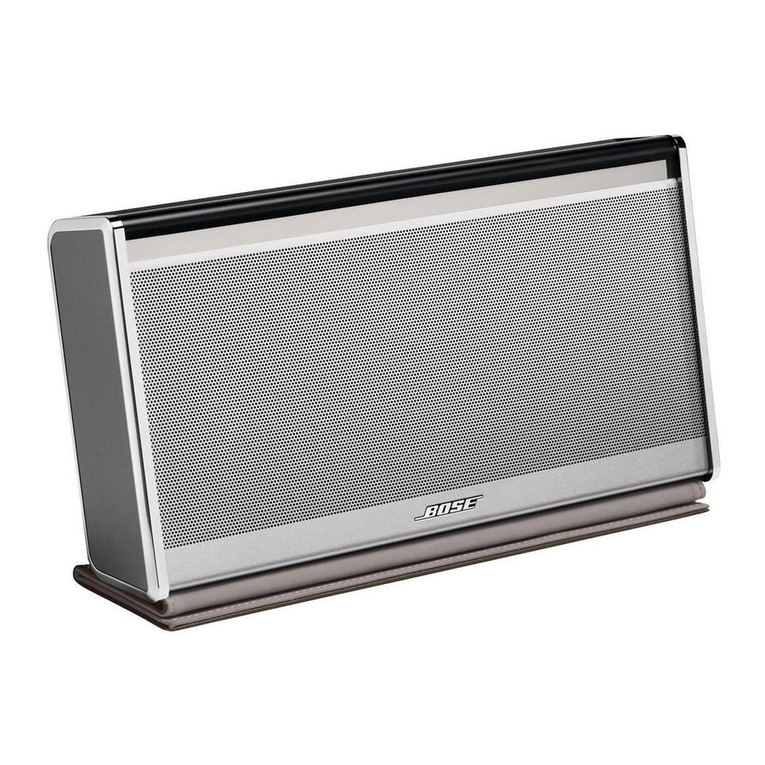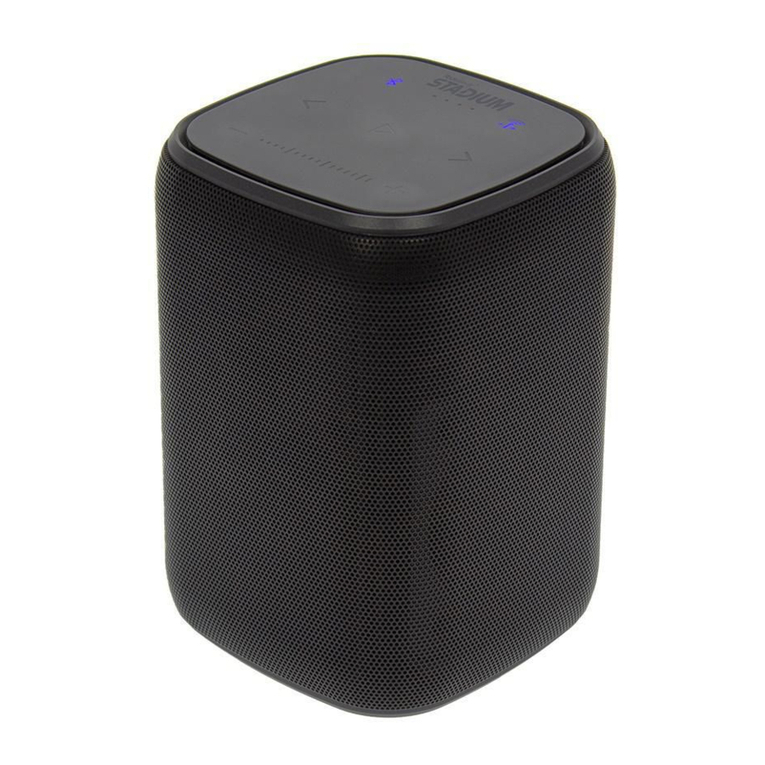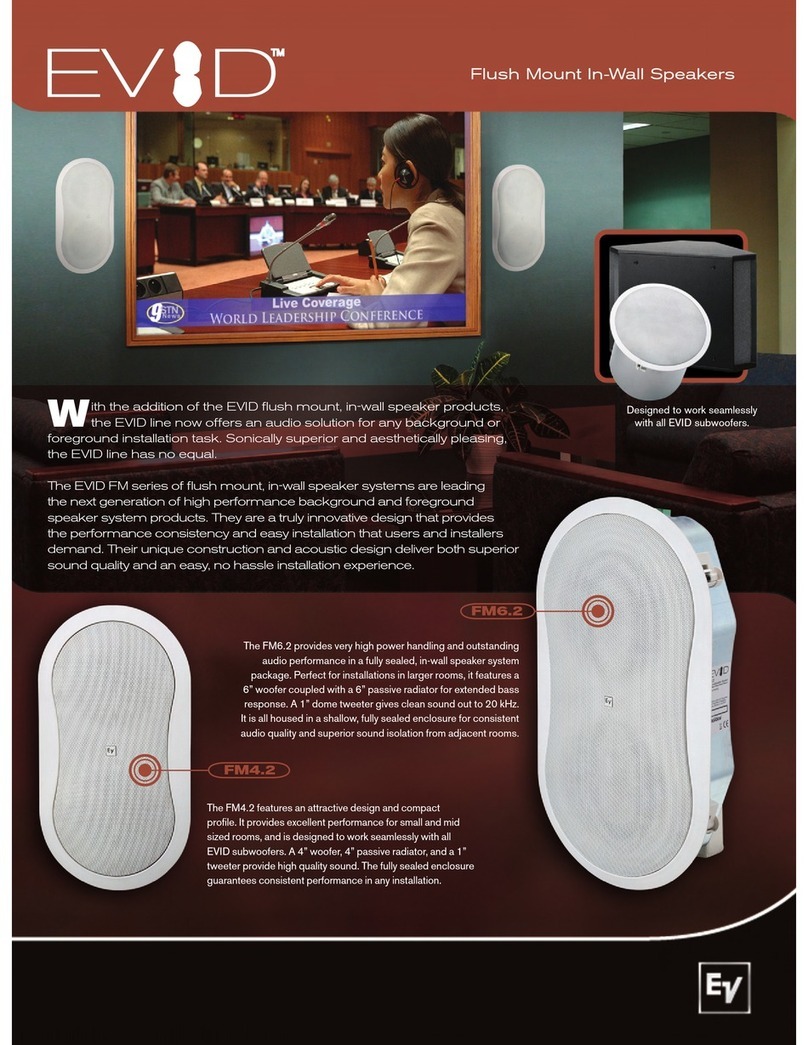3
Operating procedures
After unpacking the unit for the first time, please charge the unit for about 4~5 hours
before any operation. This is absolutely necessary as the built-in rechargeable battery
might have been discharged naturally due to long shipment and storage time, even
though it has been fully charged in the factory prior to shipment.
To charge the battery, just plug in the DC end of the switch mode power supply into the
DC IN of the unit and charging will start automatically. During the charging process, the
charging indicator LED will flash RED. When GREEN LED stays glow permanently,
battery is then fully charged and normal operation could now be started.
To operate this portable sound unit, switch on the main POWER switch (H), which will
glow GREEN. However, the main POWER switch does NOT switch on the WR modules
as each of them has dedicated Power / Volume control switch indicated by WR1, WR2.
To operate each of them, you must switch them on accordingly.
When the Charging / Battery Status Indicator glows RED, it means the built-
in rechargeable battery is weak and a recharge is necessary. While charging, the unit
could also be operated simultaneously.
Operating the built-in Wireless ( WR ) receiver modules
In the SMART 300 control panel, there are two designated power switch / volume
control knob for the built-in Wireless Receiver (WR). They are indicated by WR1 and
WR2 .
st
To use the 1 wireless microphone, first switch on the main power switch (H), then
switch on the WR1 power / volume control switch, Red LED next to it will glow. Switch
on the corresponding transmitter ( RF ). Rotate the volume control knob clockwise and
amplified sound could be heard if voice is spoken into the transmitter.
nd
To use the 2 wireless microphone, switch on WR2 power / volume control switch and
repeat the same operation as above.
By default, when the system is equipped with one WR receiver module only, it is always
controlled via WR1 switch, WR2 is then redundant.
For SMART 300 which comes with wireless receiver (WR) module, there are two
possibilities, namely the VHF or UHF version. The VHF receiver module is a fixed
frequency type. To operate the VHF version, just switch on the corresponding wireless
microphone(s) after switching on the WR1 or WR2 switch.
To operate the UHF version, which comes with 16 preset frequencies, please ensure
that the channel setting on the wireless microphone and SMART 300 receiver module(
D or E ) are the same before operation. Then perform the same procedure as above.
The above operation is only valid with SMART 300version with built-in wireless receiver
(WR) module(s). Otherwise, the WR controls are redundant.
16
Caution and tips on how to obtain the best results.
1. Before inserting the batteries, please make sure that they are inserted according to
the correct polarity.
2. The audio cable of VHF transmitters also serves as antenna. The length of the cable
is cut according to the specific frequency range. Do not alter the length or mix around
the cable of different transmitters. The use of wrong audio cable will affect the antenna
efficiency of the transmitter!
3. Use only brand new Alkaline batteries. Do not use " general purpose " batteries, When
batteries are weak, replace all the batteries at the same time. Do not mix and use new and
old batteries together.
4. Position the receiver such that it has the least possible obstructions between it and the
transmitter. Line of sight is best !
5.The transmitter and the receiver should be as close as possible but not less than 1m.
6. A receiver cannot receive signals from two or more transmitters simultaneously.
7. Turn the transmitter off when it is not in use. Remove the batteries if it is not to be
used for a period of time.
8. Antennas form an integral part of the receiver and must be installed when in Operation.
Simple DIY Trouble-shooting :
No sound when one speaks into the wireless microphone
Please verify the followings:
1.Main power switch of the system should be ON. When power on LED not lighting up,
it means that the battery is either weak or not charged. Please plug in the AC cable to
Charge the battery. The rechargeable battery has a life span of about 2 years. If the
batteries have reached their life expectancy, please change to a fresh pair.
2.The power switch of the corresponding receiver module should be put to ON. This is
indicated by the lighted power LED. When two wireless microphones are used, both
power switches of the receiver modules must be ON.
3.Wireless microphone should be switched to ON and verify that the battery is okay. (
please refer to wireless microphone operating manual ).
4.Please verify that the frequency on the wireless microphone and the corresponding
built-in wireless receiver module are exactly of the same frequency group and channel.
5.Master volume control of the system should be turned on.




